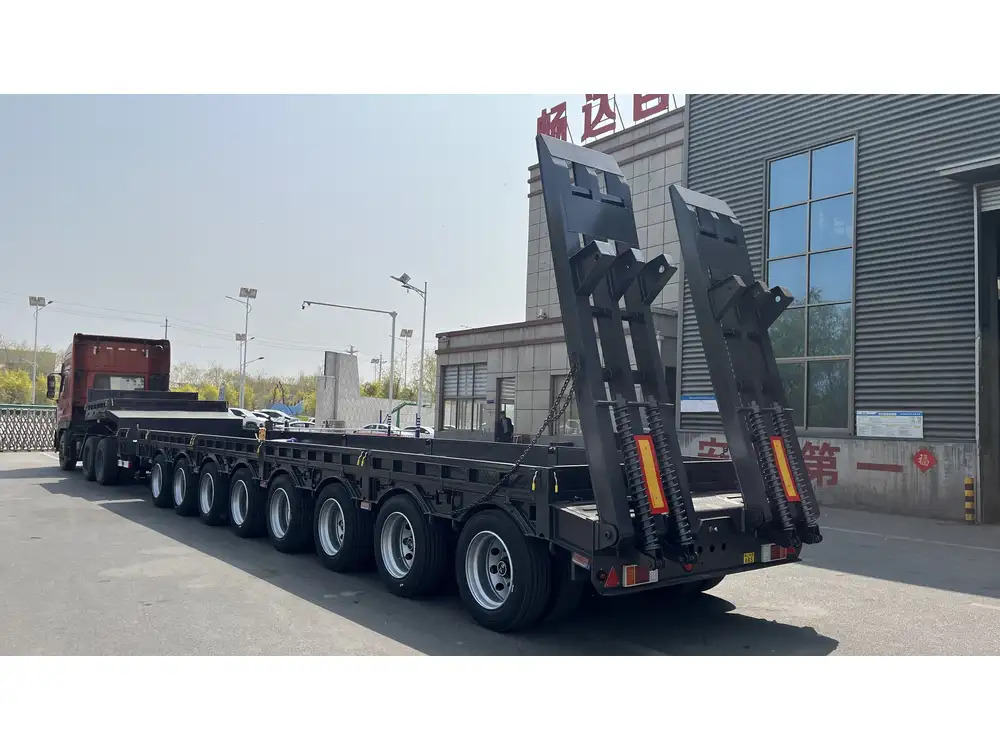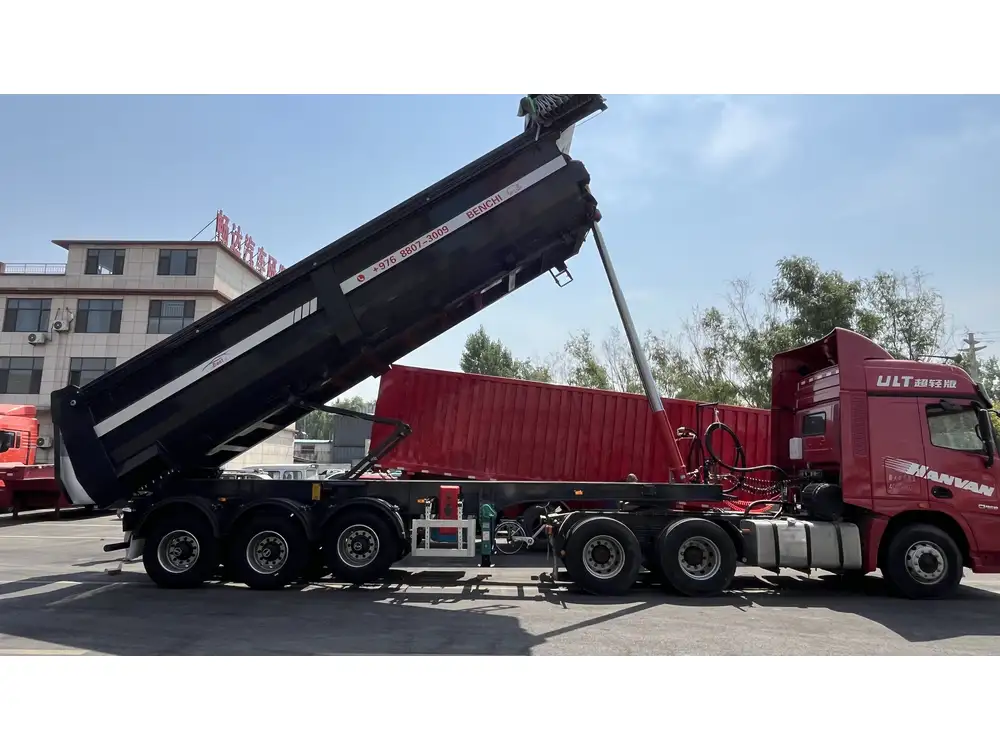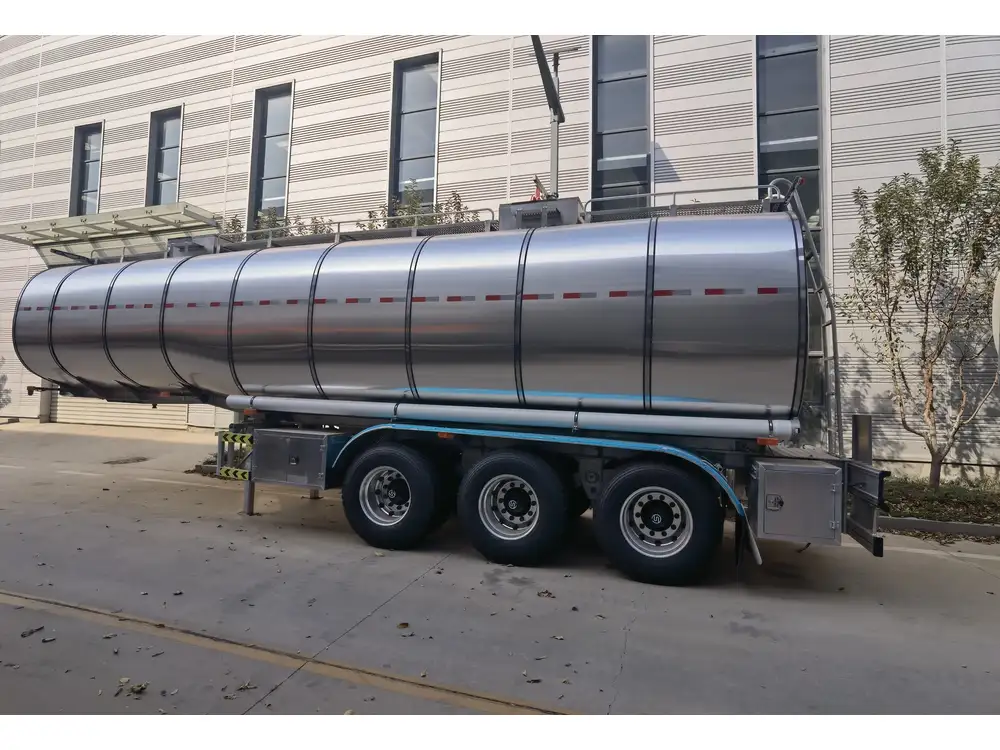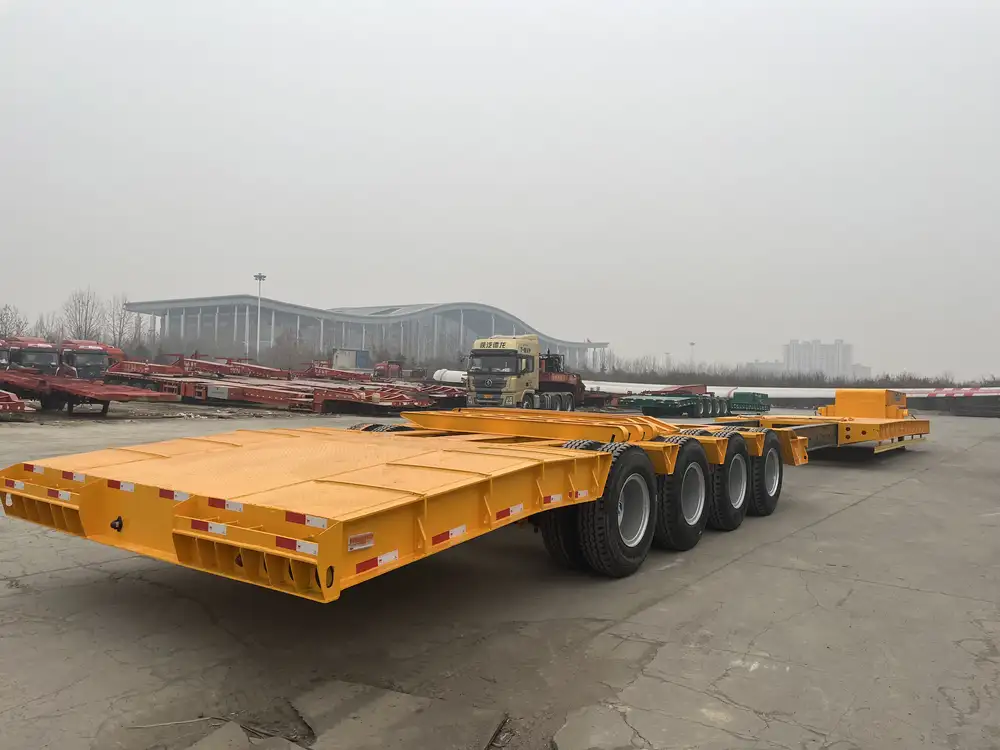When delving into the transportation and logistics industries, one fundamental query emerges with undeniable frequency: how much does a semi-trailer weigh? This question encompasses a multitude of factors, requiring a nuanced understanding of various semi-trailer types, their configurations, and their intended uses. Below, we provide a comprehensive guide that evaluates these aspects, thereby delivering essential insights for manufacturers, fleet operators, and logistics professionals.
What is a Semi-Trailer?
A semi-trailer is a type of trailer that is designed to be towed by a tractor unit. Unlike a full trailer, which has wheels at both ends, a semi-trailer has its rear axle positioned in tandem with the towing vehicle’s tractor unit, allowing it to rest partially on the truck. This unique configuration enables increased maneuverability and weight distribution.
Standard Semi-Trailer Weights
The weight of a semi-trailer can vary immensely based on its design, materials, and intended use. Below is a breakdown of different types of semi-trailers and their average weights:
| Type of Semi-Trailer | Average Weight (lbs) | Notes |
|---|---|---|
| Flatbed Trailers | 48,000 – 60,000 | Common for transporting construction materials. |
| Drop Deck Trailers | 50,000 – 65,000 | Ideal for taller cargo that needs lower clearance. |
| Refrigerated Trailers | 40,000 – 53,000 | Requires extra insulation and refrigeration units. |
| Tanker Trailers | 40,000 – 60,000 | Designed for transporting liquids or gases. |
| Enclosed Trailers | 45,000 – 58,000 | Provides protection from the elements. |

Factors Influencing Weight
While the above table provides a general idea, several factors can impact the weight of semi-trailers significantly:
Material Composition: The choice of materials, such as steel, aluminum, or composite materials, plays a crucial role in weight determination. Aluminum trailers tend to be lighter than their steel counterparts yet offer similar durability.
Size and Dimensions: Longer and wider semi-trailers will naturally weigh more due to increased material volume.
Type of Suspension: Different suspension systems can add weight. Air ride suspensions, although offering smoother rides, may weigh more than leaf spring suspensions.
Axle Configuration: The number of axles and their positioning can greatly influence both the weight and the load-bearing capacity.
Additional Features: Trailers equipped with specialized features, such as lift gates, canopies, or extra insulation, may add noticeable weight.
Legal Weight Limits: Understanding Specifications
Given the vast diversity in trailer design, it’s crucial to acknowledge the legal weight limits that govern semi-trailer use. In the United States, the Federal Bridge Formula regulates the maximum weight allowed for vehicles based on the number of axles. Here’s a glance at the regulations:
- Maximum Gross Vehicle Weight (GVW): 80,000 lbs for most interstate highways.
- Individual Axle Limits: Usually set at 20,000 lbs for single axles and 34,000 lbs for tandem axles.
Calculating the Overall Weight of a Semi-Trailer
The weight of a semi-trailer isn’t simply about what the trailer weighs; it includes various factors and configurations:
Trailer Weight: As previously discussed, the empty weight of various semi-trailers can vary greatly.
Payload Weight: The combined weight of the goods or cargo the trailer is transporting adds significantly to the total.
Truck Weight: The weight of the tractor unit must also be considered. For instance, a standard tractor unit typically weighs between 12,000 – 20,000 lbs.

Calculation Example
Let’s say you have a flatbed semi-trailer that weighs 50,000 lbs, your tractor weighs 15,000 lbs, and your payload is 30,000 lbs. The total would be:
Total Weight = Trailer Weight + Truck Weight + Payload Weight
Total Weight = 50,000 + 15,000 + 30,000 = 95,000 lbsAs this example illustrates, exceeding the 80,000 lb limit set by federal law can result in penalties and safety concerns.
Implications of Semi-Trailer Weight
Understanding the weight of semi-trailers isn’t merely an academic exercise; it has real-world implications for safety, performance, and regulatory compliance.
Safety Concerns
Heavy semi-trailers can significantly impact vehicle handling and braking distances. According to numerous studies:
- Braking Distance: Loaded trailers require longer stopping distances, which can pose risks in emergencies.
- Driver Fatigue: Drivers may find heavier loads more taxing, leading to increased risk of accidents due to fatigue.

Fuel Efficiency
Weight directly influences fuel consumption. Various studies indicate that for every 1,000 pounds added, fuel efficiency can decrease nearly 2%. Therefore, understanding and minimizing trailer weight can lead to substantial cost savings.
Maintenance and Longevity
Heavier trailers may face increased wear on components such as tires, brakes, and suspension systems. Consequently, lighter trailers designed with high-strength materials can mitigate maintenance costs.
The Future of Semi-Trailer Designs: Innovations Toward Weight Reduction
In recent years, advancements in technology and material science have ushered in a new era of semi-trailer designs aimed at reducing weight while maintaining structural integrity. Here are some noteworthy innovations:
Composite Materials: The use of fiberglass and advanced polymers instead of traditional metals leads to significant weight reduction without compromising durability.
Advanced Aerodynamics: Trailer designs that incorporate aerodynamic principles can reduce drag, resulting in improved fuel efficiency.
Telematics: Enhanced tracking systems using IoT and AI analyze weight distribution in real-time, allowing for optimization that leads to stability and safety improvements.

Choosing the Right Semi-Trailer: A Thoughtful Approach
When selecting a semi-trailer, it’s imperative to analyze operational requirements meticulously. Here’s how to choose wisely:
Assess Your Cargo Requirements:
- Weight and Volume Capacity: Ensure the trailer can handle the required payload.
- Dimensions: Consider cargo dimensions to avoid overloading.
Evaluate Intended Routes:
- Road Regulations: Be aware of weight limits along chosen routes to ensure compliance.

Analyze Costs Versus Features:
- Initial Investment: Weight-saving features may come at a premium. Calculate ROI by considering fuel efficiency and maintenance savings.
Conclusion
Investing the time to understand the complexities surrounding semi-trailer weights can ultimately lead to operational efficiencies, cost savings, and improved safety. As the logistics and transportation landscape continues to evolve, staying informed about regulations, innovations, and best practices will empower manufacturers, fleet operators, and businesses alike to navigate this crucial aspect of the industry effectively.
By comprehensively addressing the inquiry of how much does a semi-trailer weigh, we hope to provide clarity and guidance in making informed decisions that align with your operational needs.



